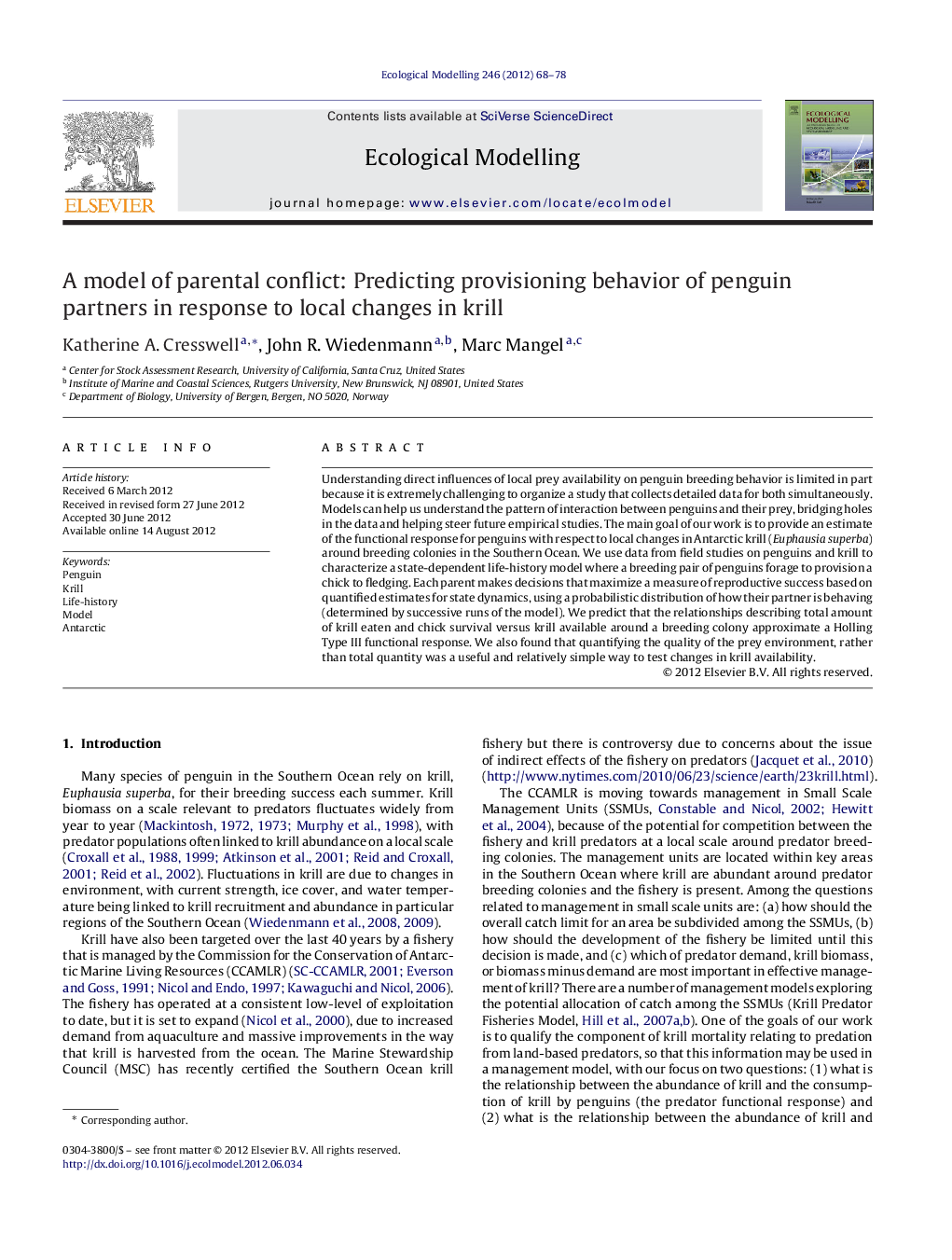| Article ID | Journal | Published Year | Pages | File Type |
|---|---|---|---|---|
| 4376291 | Ecological Modelling | 2012 | 11 Pages |
Understanding direct influences of local prey availability on penguin breeding behavior is limited in part because it is extremely challenging to organize a study that collects detailed data for both simultaneously. Models can help us understand the pattern of interaction between penguins and their prey, bridging holes in the data and helping steer future empirical studies. The main goal of our work is to provide an estimate of the functional response for penguins with respect to local changes in Antarctic krill (Euphausia superba) around breeding colonies in the Southern Ocean. We use data from field studies on penguins and krill to characterize a state-dependent life-history model where a breeding pair of penguins forage to provision a chick to fledging. Each parent makes decisions that maximize a measure of reproductive success based on quantified estimates for state dynamics, using a probabilistic distribution of how their partner is behaving (determined by successive runs of the model). We predict that the relationships describing total amount of krill eaten and chick survival versus krill available around a breeding colony approximate a Holling Type III functional response. We also found that quantifying the quality of the prey environment, rather than total quantity was a useful and relatively simple way to test changes in krill availability.
► We model the behavior of parent penguins feeding a chick. ► We look at response of breeding success to changes in local krill availability. ► The relationship approximates a Holling Type III functional response.
